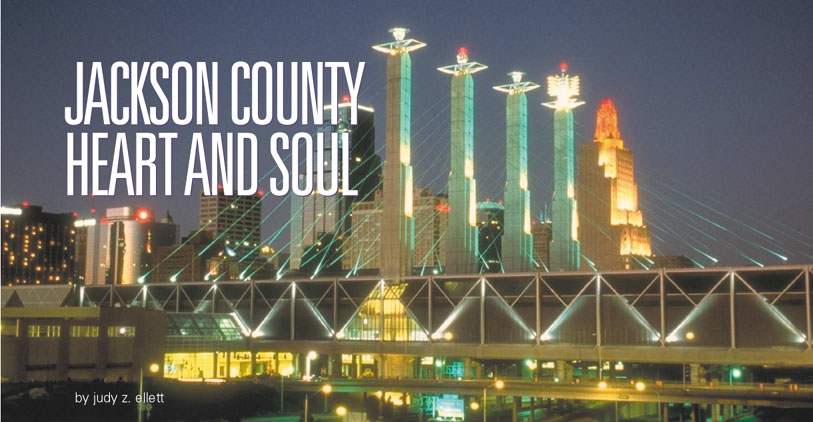
Watch a rerun of The Wonder Years, and you
get a pretty good idea of what it was like to grow up in Raytown in the
late ‘60s and early ‘70s. In an era of the Vietnam War, race
riots and assassinations, it was an oasis of Middle America. Despite its
reputation as the home of the Tomb of the Unknown Bowler, few kids there
suffered the burdens of poverty or, frankly, the burdens of wealth. It
was a place where the schools provided a good education to those who were
willing to work hard and earn it. Truth be told, it still is.
As Raytown occupies a unique place at the center of Jackson County, Jackson
County—also on occasion the recipient of undeserved disrespect—similarly
occupies a unique place at the center of the greater Kansas City metropolitan
area. No other county offers a greater variety of lifestyle, from loft
living in the River Market to lake
living at Lotawana to rural life in Oak Grove.
Over one-third of those who live in the 11-county metro area live in Jackson
County. Over 42 percent of the jobs and over half the top employers (those
employing more than 500 workers) can be found here as well. Because so
many top-drawer companies call the county home, earnings per job at $36,745
is higher in Jackson County than in any other county in the surrounding
area. It also beats out the metro average of $34,350 and the national
average of $34,110.
While the great jobs tend to gravitate toward the central business district,
the citizens who hold those jobs come from all over. A study of migration
patterns shows major increases in population in Lee’s Summit, Blue
Springs and Grain Valley, primarily because of excellent schools, but
there are stalwarts west and south who would never dream of moving. Regardless
of faith, residents of Brookside and Waldo depend on strong Jewish, Lutheran
and Catholic schools to remain the cornerstones of their neighborhoods
as those schools have been for decades.
As for institutions of higher learning, Jackson County houses more main
campuses than any other county in the area. Many of those universities
collaborate with the Stowers Institute and MRI and other participants
in Kansas City’s life sciences initiative, anchored for the most
part at Rockhill Road and Volker Boulevard.
Hospitals are a big part of that initiative, and nowhere does health care
have a greater tradition than in Jackson County. Saint Joseph Health Center,
Research Medical Center, Saint Luke’s Hospital, and Children’s
Mercy all have roots that go back over one hundred years. Of the 25 facilities
ranked on Ingram’s most recent list of Top Area Hospitals & Medical
Centers, 12 are located in Jackson County.
Jackson County has Union Station and the Country Club Plaza and the Liberty
Memorial. It has all the major sports teams in Kansas City with the Comets
and Knights at Kemper Arena, the Explorers at Hale Arena, and, of course,
the occupants of the Truman Sports Complex. It is the only county among
its neighbors to have produced the 1969 Chiefs and the 1985 Royals, Super
Bowl and World Series teams respectively.
The vast majority of live performance venues in town are here, from 18th
& Vine to the Missouri Repertory Theater to the Martin City Melodrama.
It is the residence of the Nelson-Atkins Museum of Art, often described
as the finest art museum between Chicago and San Francisco. It offers
Westport for nightlife and a strip of restaurants along 39th Street that
will make you forget all about steak and barbecue.
This is the only county in the metro area that can boast that it produced
a U.S. president, or such artists as Robert Altman, Thomas Hart Benton,
Walt Disney, Charlie Parker and, in his own way, Satchel Paige.
Jackson County, with a larger population and a wider disparity among the
socio-economic levels of that population, faces challenges that many surrounding
counties don’t. It also has so much more to offer. It is not just
central to the Kansas City metropolitan area; it is the heart and soul.